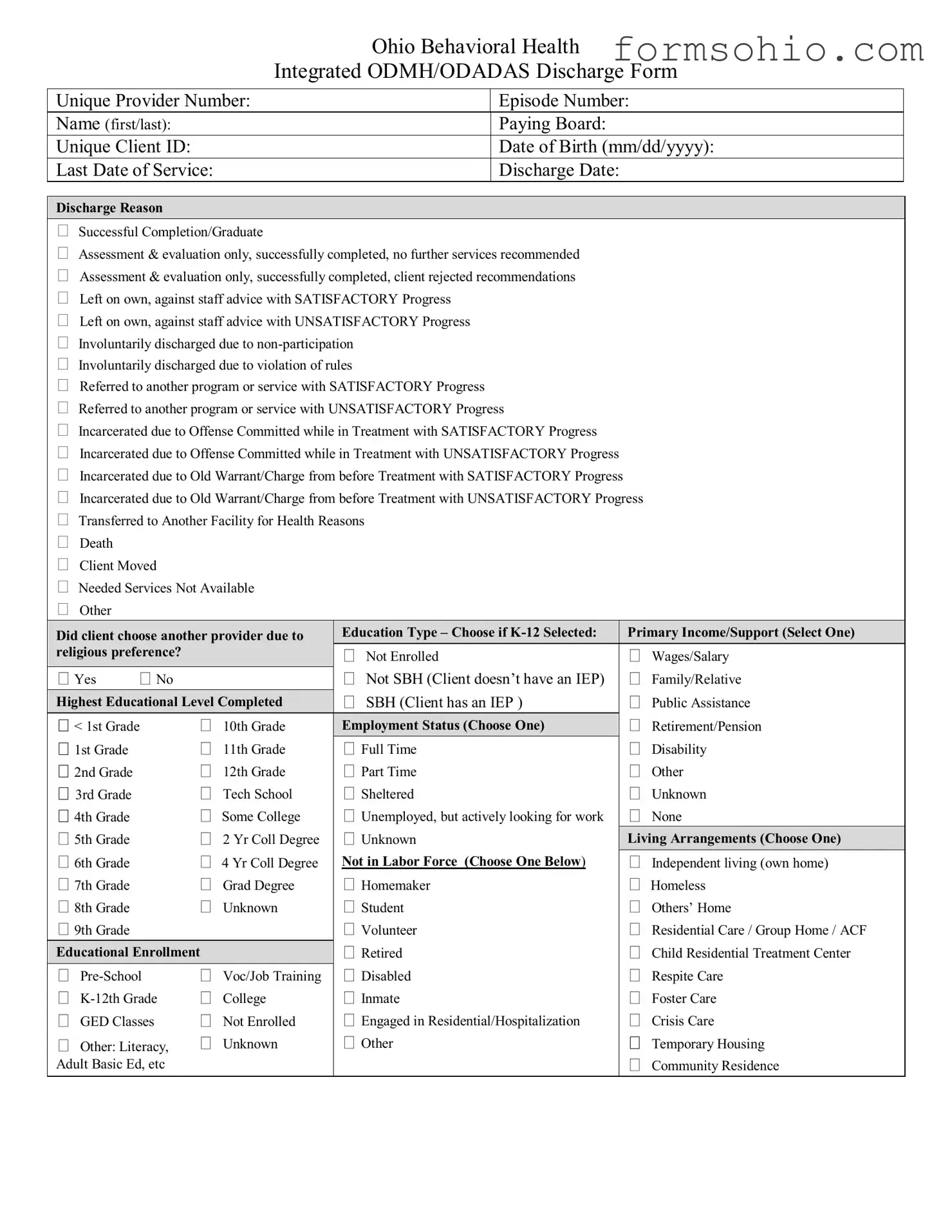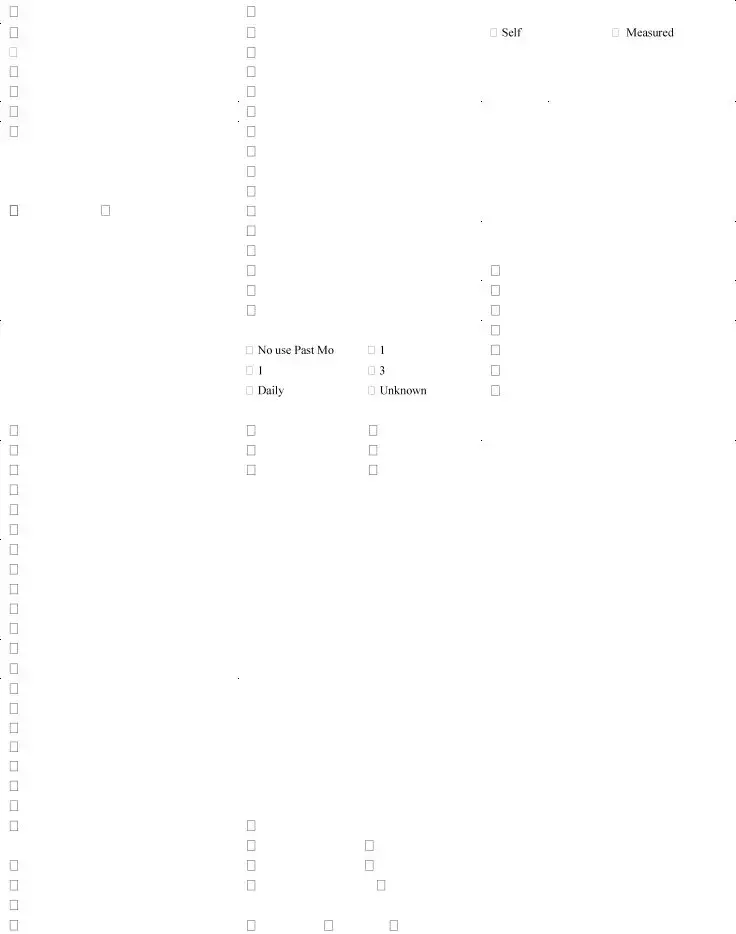|
Ohio Behavioral Health |
|
Integrated ODMH/ODADAS Discharge Form |
|
|
|
Unique Provider Number: |
|
Episode Number: |
Name (first/last): |
|
Paying Board: |
Unique Client ID: |
|
Date of Birth (mm/dd/yyyy): |
Last Date of Service: |
|
Discharge Date: |
 Discharge Reason
Discharge Reason
Successful Completion/Graduate
Assessment & evaluation only, successfully completed, no further services recommended
Assessment & evaluation only, successfully completed, client rejected recommendations
Left on own, against staff advice with SATISFACTORY Progress
Left on own, against staff advice with UNSATISFACTORY Progress
Involuntarily discharged due to non-participation
Involuntarily discharged due to violation of rules
Referred to another program or service with SATISFACTORY Progress
Referred to another program or service with UNSATISFACTORY Progress
Incarcerated due to Offense Committed while in Treatment with SATISFACTORY Progress
Incarcerated due to Offense Committed while in Treatment with UNSATISFACTORY Progress
Incarcerated due to Old Warrant/Charge from before Treatment with SATISFACTORY Progress
Incarcerated due to Old Warrant/Charge from before Treatment with UNSATISFACTORY Progress
Transferred to Another Facility for Health Reasons
Death
Client Moved
Needed Services Not Available
Other
|
|
|
|
|
|
Education Type – Choose if K-12 Selected: |
|
|
Primary Income/Support (Select One) |
|
|
|
|
|
|
|
|
|
|
|
|
|
|
Did client choose another provider due to |
|
|
religious preference? |
|
|
|
Not Enrolled |
|
Wages/Salary |
|
|
|
|
|
|
|
|
Yes |
No |
|
|
|
Not SBH (Client doesn’t have an IEP) |
|
Family/Relative |
|
Highest Educational Level Completed |
|
|
SBH (Client has an IEP ) |
|
Public Assistance |
|
|
|
|
|
< 1st Grade |
|
10th Grade |
|
Employment Status (Choose One) |
|
|
Retirement/Pension |
|
1st Grade |
|
11th Grade |
|
Full Time |
|
Disability |
|
2nd Grade |
|
12th Grade |
|
Part Time |
|
Other |
|
3rd Grade |
|
Tech School |
|
Sheltered |
|
Unknown |
|
4th Grade |
|
Some College |
|
Unemployed, but actively looking for work |
|
None |
|
5th Grade |
|
2 Yr Coll Degree |
|
Unknown |
|
Living Arrangements (Choose One) |
|
|
6th Grade |
|
4 Yr Coll Degree |
|
Not in Labor Force (Choose One Below) |
|
Independent living (own home) |
|
7th Grade |
|
Grad Degree |
|
Homemaker |
|
Homeless |
|
8th Grade |
|
Unknown |
|
Student |
|
Others’ Home |
|
9th Grade |
|
|
|
|
Volunteer |
|
Residential Care / Group Home / ACF |
|
|
|
|
Retired |
|
Child Residential Treatment Center |
|
Educational Enrollment |
|
|
|
|
|
|
|
|
|
|
|
|
|
|
|
|
Pre-School |
|
Voc/Job Training |
|
Disabled |
|
Respite Care |
|
K-12th Grade |
College |
|
Inmate |
|
Foster Care |
|
GED Classes |
|
Not Enrolled |
|
Engaged in Residential/Hospitalization |
|
Crisis Care |
|
Other: Literacy, |
Unknown |
|
Other |
|
Temporary Housing |
Adult Basic Ed, etc |
|
|
|
|
|
|
Community Residence |
|
|
|
|
|
|
|
|
|
|
|


 Discharge Reason
Discharge Reason
